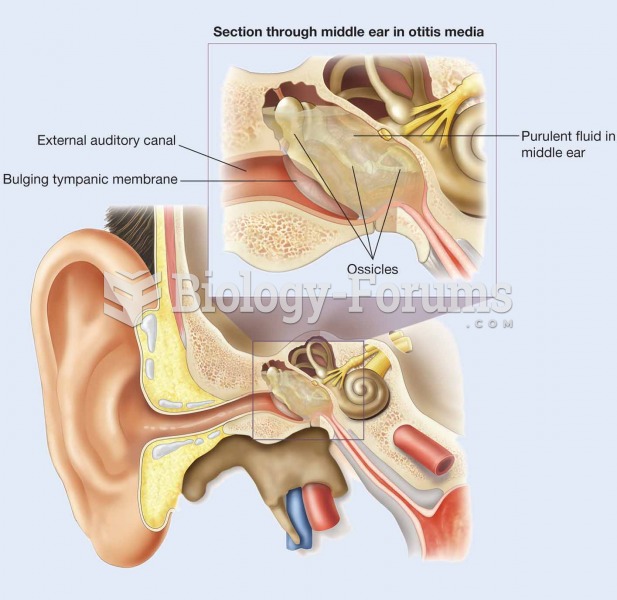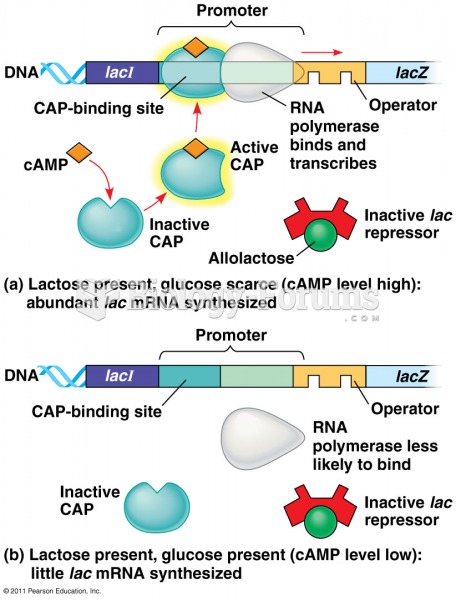|
|
|
Russia has the highest death rate from cardiovascular disease followed by the Ukraine, Romania, Hungary, and Poland.
The word drug comes from the Dutch word droog (meaning "dry"). For centuries, most drugs came from dried plants, hence the name.
Since 1988, the CDC has reported a 99% reduction in bacterial meningitis caused by Haemophilus influenzae, due to the introduction of the vaccine against it.
Fatal fungal infections may be able to resist newer antifungal drugs. Globally, fungal infections are often fatal due to the lack of access to multiple antifungals, which may be required to be utilized in combination. Single antifungals may not be enough to stop a fungal infection from causing the death of a patient.
Not getting enough sleep can greatly weaken the immune system. Lack of sleep makes you more likely to catch a cold, or more difficult to fight off an infection.
 In acute otitis media, the tympanic membrane is usually bulging and purulent fluid is present in the
In acute otitis media, the tympanic membrane is usually bulging and purulent fluid is present in the
 An orange-red biohazard symbol indicates that bloodborne pathogens may be present, and items should ...
An orange-red biohazard symbol indicates that bloodborne pathogens may be present, and items should ...





